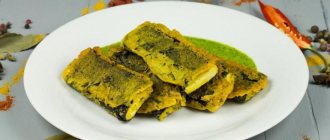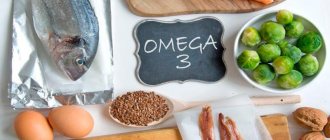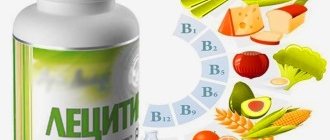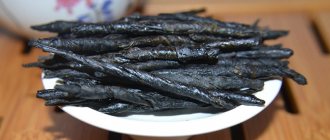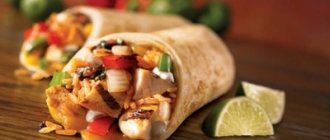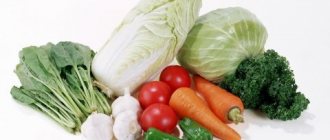To make your diet even healthier, include in your diet foods that can replace fish and fill the body’s daily requirement of Omega-3.
The daily requirement for Omega-3 is from 1 to 2.5 grams per day. It depends on the state of health of the body.
ON THE TOPIC: 5 myths about “superfoods” that everyone believes
What are the benefits of Omega-3 acids?
Experts have proven that Omega-3 acids are involved in almost all processes in the body:
- strengthen blood vessels, giving them greater elasticity;
- reduce the level of “bad” cholesterol, reducing the risk of cardiovascular diseases; prevent arrhythmia;
- reduce the risk of developing cancer;
- promote active brain function;
- activate the activity of the immune system;
- normalize the functions of the nervous system, preventing neuroses and depression;
- accelerate metabolic processes, promoting weight loss;
- provide prevention of the development of arthritis;
- remove toxins from the body;
- inhibit the development of inflammatory processes;
- prevent allergic reactions;
- reduce the likelihood of female diseases;
- improve the quality of skin, hair and nails;
- promote the absorption of certain vitamins.
After three years
Many children are reluctant to eat fish, especially boiled fish, due to its taste and smell. You can use a trick by hiding the fish in other dishes.
- Boil the fish fillet, remove all bones from it, and grind the fillet in a blender. The resulting minced meat can be wrapped inside pancakes and baked, sprinkled with cheese or filled with sour cream.
- You can prepare portioned kebabs by stringing pieces of fish (which must first be baked or boiled) between boiled potatoes, carrots or other vegetables, thus disguising the fish among the vegetable pieces.
- Cut fish fillets with cookie cutters, dip in breading, stew with vegetables or bake in the oven.
- Prepare fish balls. The smell can be dulled with sour cream sauce, cheese, and fresh herbs.
- Some mothers suggest deceiving the child's tastes by cooking fish in chicken broth - it should be white fish (cod), which looks like chicken breast. You can initially prepare a mixture of chicken and fish with vegetables, or chicken soup with the addition of fish.
- It is worth adding carrots and onions sauteed in butter to fish dishes; they reduce the smell and taste of fish.
- It is useful to bake fish under a cheese crust; cheese also gives the fish a different taste.
Photo - Lori's photo bank
Many vegetarians allow themselves to eat fish. In the first stages this is normal, I also used it in small quantities at first. I just didn't know what to replace the fish with
and that this is even possible. The fact is that people treat fish like plants, there is something edible floating in the water and they don’t seem to understand or feel anything.
In fact, the fish feels pain and without water it suffocates. Therefore, the ethical side is present here. In addition, fish contains many harmful substances from the water, including mercury, which can enter your body (raw fish can only be eaten in proven places).
Flax-seed
100 g of flax seeds contain as much as 29 g of Omega-3. So this product is simply a superfood that many do not take into account. Women are especially advised to include flax seeds in their diet as they help improve skin, hair and nails. Flax seeds can be added to salads, a couple of teaspoons in kefir and low-fat yogurt.
IN THE TOPIC: 3 reasons to eat scrambled eggs for breakfast
If your child is allergic to fish
If you have an allergy, you will have to completely exclude fish from your diet, despite all its usefulness.
The cause of the allergy lies in a special protein found in fish caviar, muscle tissue or mucus. Allergens are practically not destroyed during cooking or frying; fish still remains dangerous for allergy sufferers. In case of severe allergies, even the air in the premises where fish is prepared or its particles remaining on the dishes can be dangerous. This allergy is often hereditary and is extremely difficult to treat.
The symptoms of such allergies are pronounced, reactions can occur quickly and severely. This is a tingling sensation in the area of the lips and tongue, palate and throat, then nausea with vomiting occurs, various kinds of skin manifestations can form - severe itching and rash, redness, blisters all over the body. In severe cases, Quincke's edema occurs or anaphylactic shock develops, which can be fatal.
It is important to remember that any fish can become allergenic, but red fish and red caviar, which contain the most allergenic protein, are especially dangerous. Sea fish are more allergenic, while river fish are less likely to cause reactions. Other river and sea inhabitants - crayfish, crabs, shrimp - can also provoke allergies. Before eating fish, if you have allergies in your family, you should consult your doctor.
Do not forget that an allergy to fish also prohibits crab sticks - this is also a fish product.
Green vegetables and herbs
Every woman's diet should include greens and green vegetables, especially if you're watching calories. Spinach, broccoli, cauliflower, Brussels sprouts, greens (dill, parsley, purslane, cilantro) - something that will prevent you from gaining excess weight and will help enrich your body with vitamins and minerals, as well as healthy fatty acids.
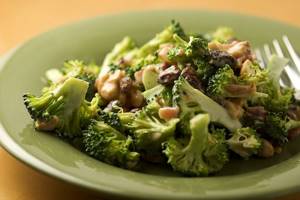
Tips for introducing fish into complementary foods
- Start introducing fish into your child’s diet with 0.5 tsp, gradually increasing the portion by year to 100 grams.
- Like any new product, it is better to start introducing fish in the morning so that you can track your baby’s reaction throughout the day.
- For bottle-fed children, the first acquaintance with fish dishes can be made at 8 months, for breastfed babies - 9-10 months.
- Artificial babies should be offered fish dishes before formula, and WHO recommends giving breastfed babies fish after breast milk. By and large, both options have a place to be, because each child is individual.
- Do not mix several types of fish into one dish unless you have previously verified that there is no allergic reaction to each of them.
- Replace meat dishes with fish 2-3 times a week, offering it for lunch or dinner.
- Do not fry fish for your baby (it is already quite fatty), it is better to boil or steam it.
- Frozen fish does not need to be thawed completely, just let it thaw a little in the water.
- It is necessary to lower the fish into boiling water, so it will retain maximum beneficial properties.
- It is better if you offer your baby a freshly prepared dish every time. If this is not possible, you can store the prepared product in the refrigerator for no more than a day.
The child refuses fish
Don't give up on your first try. Offer him a different type of fish or cook it in a different form. If he doesn’t want puree, he’ll probably like soup.
Do not insist under any circumstances, try to postpone the introduction of fish by a week or two or even more. After all, children's taste preferences often change.
Representatives of the salmon family
Chum salmon and pink salmon are the most common fish of the salmon genus. They make up more than eighty percent of the catch of fish of this species:
- Chum salmon is a type of Pacific salmon. There are two types of fish of this breed: summer and autumn. The first lives in the northern part of the world, the second in the south. Autumn chum salmon are much larger than summer ones. This fish has a highly developed sense of homeland - it always returns to spawn in the same place where it was born.
- Pink salmon is also called pink salmon. She prefers cold waters with a temperature no higher than 15 degrees - at 26 degrees the fish dies. Pink salmon eat high-calorie foods, and their meat is rich and fatty. It is superior to keta meat in terms of caloric content and amount of fat. Pink salmon spawn one and a half years after birth and usually die after spawning. For breeding, she chooses new places - usually rivers with large pebbles. The fry hide in a burrow for some time after birth, then are carried out to the open sea by the current.
Pink salmon and chum salmon differ both in appearance and habitat.
Budget analogues of expensive products
One way to save on food is to replace expensive ingredients with more affordable ones when the recipe allows. Gourmets will complain that the authenticity of taste will suffer. But cooking is beautiful because of its flexibility: a creative approach gives birth to new dishes.
We invite you to compare some products and their prices.
Attention! The prices in the article are approximate and valid for the central part of Russia at the time of writing.
The cost of these products has increased significantly. Chicken is the most accessible. It can replace fish and red meat. At the same time, it is more profitable to buy a whole carcass (chilled - 100-130 rubles / kg), from which you can prepare both the first and second courses. The most expensive are chicken breasts, from 150 rubles/kg. Therefore, if you need fillet, don’t be lazy - cut the flesh from the legs. They are cheaper.
Expensive beef can be replaced with pork in many recipes. At the same time, it is important to understand the cuts: parts of the carcass differ in taste and price. The most expensive are tenderloin (from 300 rubles/kg) and ham (≈280–300 rubles.
/kg). If you do not plan to cook meat in large pieces, then take undercuts (≈230 rub./kg). This is meat with layers of fat and sometimes a small rib bone. It is suitable for minced meat and many meat dishes.
How to choose meat
The most noticeable increase in price was fish. The price tag for fresh red fish starts from 300 rubles/kg. But many varieties have a similar taste and are therefore interchangeable.
- Pollock (≈150 rub./kg) instead of cod (≈300 rub./kg).
- Flounder (≈100 rub./kg) instead of halibut (≈180 rub./kg).
- Pangasius (≈130 rub./kg) instead of haddock (≈200 rub./kg).
- Sprat (≈50 rub./kg) instead of anchovies (≈250 rub./kg).
How to choose fish
Vegetables and greens
To save money, fresh vegetables and fruits can be replaced with canned ones. For example, to bake meat with pineapple in the oven, it is not necessary to use fresh fruit (≈200 rubles) - canned pineapple (from ≈50 rubles) will add the necessary sourness to the dish. In many recipes, tomato paste (from ≈60 rubles) can do the job of fresh tomatoes (≈130 rubles/kg).
Replacing vegetables that are exotic for our agriculture with more affordable ones will also save money. You can often find capers in solyanka recipes.
These are unopened buds of the bush of the same name. They are brought from Southern Europe and sold pickled. The price tag for a 250-gram jar starts from 100 rubles.
In terms of taste, capers are similar to regular pickles, which are much more affordable. Agnes Kantaruk/Shutterstock.com
Celery stalks (≈150 rub./kg) can be replaced with cabbage (≈40 rub./kg), marjoram (≈130 rub./kg) with dried oregano, and saffron (≈400 rub./kg) with a combination of turmeric and red pepper.
Benefits of turmeric for athletes
Dressing for dishes
Sesame, rapeseed, flaxseed and other unusual vegetable oils have a number of useful properties (for example, sesame seed oil has a beneficial effect on the heart and goes well with meat and seafood), but is significantly more expensive than sunflower oil. The price of refined sunflower oil starts from 60–70 rubles, while sesame oil cannot be found cheaper than 100 rubles. Therefore, if you want to save money, cook and season your dishes with regular sunflower oil.
Recently, soy and pomegranate sauces and balsamic vinegar have also become popular among housewives. These products are not cheap, as they are most often imported. For example, the birthplace of balsamic vinegar is Italy. A 200 ml bottle costs from 200 rubles and above. Wine vinegar is half the price, but can cope with the gastronomic functions of balsamic vinegar. Especially if you infuse it with herbs.
Shulevskyy Volodymyr/Shutterstock.com
Many recipes also call for wine to add richness and flavor to the dish. For cooking, you can buy wine in tetrapacks (it’s cheaper) or replace it with available liquids. So, instead of red wine, berry juice is suitable, and instead of white wine, chicken broth.
On a note
- Freshly squeezed lemon juice can be replaced with citric acid powder.
- If the recipe calls for melted chocolate, then it can be replaced with cocoa powder diluted in vegetable oil (3 tbsp cocoa + 1 tbsp butter = 1 bar).
- Dry egg powder (from ≈30 rub./kg), melange, can be used instead of eggs when preparing various sauces, homemade mayonnaise and even omelettes. It is also widely used in confectionery. By the way, in baking, eggs can also be replaced with baking powder, quenched with vinegar (1 tsp = 1 egg).
Fishy or fishy
The most accessible of them is fish oil. Please note: it differs from fish oil, which was mandatory prescribed to children as a general tonic and immunostimulating agent in Soviet times. Then studies were conducted that showed that consuming such fat in large quantities can negatively affect the liver and kidneys. Therefore, today fish oil on the shelves has replaced fish oil, which is extracted from the flesh of fish adjacent to the muscle tissue, which eliminates the shortcomings of its predecessor.
